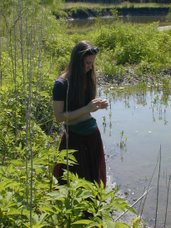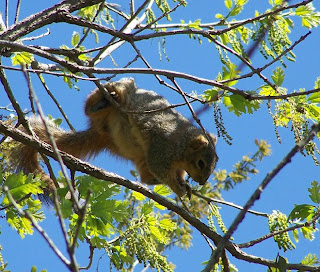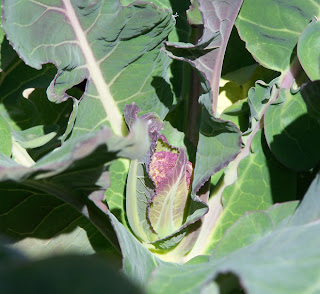Sabynino was my Russian family's estate
&
Prince Dmitry Aleksandrovich Volkonsky in sec. Sabynino was my great grandfather.
This 1st article came to me from an anonymous Russian leaving a comment in my Blogger blog (see comments to Bitter Sweet post)
from http://yakovl-adm.narod.ru/history.htm
ИСТОРИЯ ЗЕМЛИ ЯКОВЛЕВСКОЙ
In English (from Google Translate):
With the formation of the Belgorod province of the rich land and freely streamed royal dignitaries Chernozem - Prince Volkonsky, Golitsyn, Trubetskoy, Yusupov, Kurakins, graphs, etc. Sheremetevs rich earth-friendly agriculture, environment, good conditions for the development of a variety of crafts, the influx of skilled and hard-working employees contributed to the development and prosperity of the region. The greatest number of industrial enterprises was concentrated in Tomarovke: a leather, and shubnye kruporushnye production, steam, wind and water mills, poultry fattening items, egg storage, grain ssypnye items. Enjoyed great fame iconostasis factory. Iconostasis were sold abroad (Germany, Japan and other states). There were also a suburb Tomarovskoy soap, brick factories and plants for the production of wine "of Cahors." Tomarovskie bagels were in great demand even in Petrograd, and eggs were sent to Kharkov, Moscow, Petrograd and other fishing goroda.Goncharny
Industrial production has been developed in other villages: Kustov was in a brickyard in Nevedomke - brick and distilling plants, three plants were in Dmitrievka - pottery, lime and brick.
Developed and agriculture. In Sabynino had a large potato farm landowner Alferov, a plantation of sugar beet breeders and farm Rebinder breeding cows landowner Avdeev. Considerable economy was in a field Kustov, in Seretino - creameries and salotopny plants. Famous stud of Prince Dmitry Aleksandrovich Volkonsky in sec. Sabynino.
Residents of villages, mostly peasants, went to sell their goods in different cities, as well as to the settlement Tomarovku and Yakovlev. In the settlement Tomarovka in a year are five fairs and three fairs in Yakovlev, who came in from nearby villages, peasants and single homesteaders with bread and rustic food, utensils, and sundries.
"And their harsh methyl twentieth century
a bullet, the sword more than once "
The beginning of the twentieth century entered the history of our region, as well as for the whole country, crop failures, disasters linked to the Russian-Japanese war of 1903-1905 period and World War I in 1914.
In 1914, the mobilization of men, they were sent to Belgorod, and then to the front. In the villages there was a continuous crying, crying wives, children, mothers, old men - fathers. Deserted huts, deprived of spousal support, the male labor force of the family. Some farmers were forced to give up their land more prosperous middle peasants or kulaks. In order to somehow survive, women, teenagers become employees. His bread is not enough. The peasants of some villages were taken to the Ukraine Belgorod chalk and change it on the bread.
In Russian:
С образованием Белгородской губернии на богатые и привольные земли Черноземья устремились царские сановники - князья Волконские, Голицыны, Трубецкие, Юсуповы, Куракины, графы Шереметевы и др. Богатые земли, благоприятный для ведения сельского хозяйства климат, хорошие условия для развития разнообразных ремёсел, приток умелых и трудолюбивых работников способствовали развитию и процветанию региона. Наибольшее количество промышленных предприятий было сосредоточено в Томаровке: это кожевенные, шубные и крупорушные производства, паровые, ветряные и водяные мельницы, откормочные пункты птицы, яичные склады, хлебные ссыпные пункты. Большой известностью пользовалась иконостасная фабрика. Иконостасы продавались за границу (в Германию, Японию и др. государства). Были также в Томаровской слободе мыловаренные, кирпичные заводы и заводы по производству вина «Кагор». Томаровские бублики пользовались большим спросом даже в Петрограде, а яйца отправлялись в Харьков, Москву, Петроград и др. города.Гончарный промысел
Промышленное производство было развито и в других селах: в Кустовом находился кирпичный завод, в Неведомке - кирпичный и винокуренный заводы, три завода насчитывалось в Дмитриевке - гончарный, силикатный и кирпичный.
Развивалось и сельское хозяйство. В Сабынино имелось крупное картофелеводческое хозяйство помещика Алферова, плантация сахарной свеклы заводчиков Ребиндеров и ферма племенных коров помещиц Авдеевых. Значительное полевое хозяйство было в Кустовом, в Серетино - маслобойный и салотопный заводы. Славился конный завод князя Дмитрия Александровича Волконского в с. Сабынино.
Жители селений, большею частью крестьяне, выезжали торговать своим товаром в разные города, а также в слободу Томаровку и Яковлево. В слободе Томаровка в году бывало пять ярмарок и по три ярмарки в Яковлево, на которые приезжали из ближайших селений крестьяне и однодворцы с хлебом и деревенскими продуктами, посудой и мелочными товарами.
«И метил их суровый век двадцатый
то пулею, то саблею не раз»
Начало ХХ века вошло в историю нашего края, как и для всей страны, неурожаем, бедствиями, связанными с русско-японской войной 1903-1905 годов и Первой мировой войной 1914 года.
В 1914 г. началась мобилизация мужчин, их отправляли в Белгород, а затем на фронт. В селах стоял сплошной плач, плакали жены, дети, матери, старики - отцы. Опустели хаты, лишились мужской поддержки, мужских рабочих рук семьи. Некоторые крестьяне вынуждены были отдавать свою землю более зажиточным середнякам или кулакам. Чтобы как-то прожить, женщины, подростки становились наемными работниками. Своего хлеба не хватало. Крестьяне некоторых сел возили на Украину белгородский мел и меняли его на хлеб.
http://www.yak.arvixe.ru/index.php?option=com_content&view=article&id=83:-qq-2007-&catid=7:2010-11-05-08-12-27&Itemid=14
This is in Russian but the translated title in English is
Princely family FROM SABYNINO
Его внук, князь Дмитрий Александрович, в начале прошлого века был Белгородским уездным предводителем дворянства. После окончания Николаевского юнкерского кавалерийского училища в 1884 году Дмитрий Александрович был направлен в 35-й Белгородский драгунский полк младшим офицером. Отсюда и его неистовая страсть к лошадям. В начале XX века у него в Сабынино был конный завод. Верховые лошади, выведенные на этом заводе, высоко ценились покупателями.
Grandson of Boris G. - Dmitry - in the early twentieth century was the Belgorod district leader of the nobility. After graduating cadet Nicholas Cavalry School in 1884, he was assigned to the 35th Dragoons Belgorod junior officer. Hence his frantic passion for horses: the estate sabyninskom later he started a model stud farm, riding horses bred there were famous throughout the south of Russia.
Maybe the most amazing find so far is a pic from online that shows poet K Balmont visiting Volkonsky relatives (my Volkonsky family) with his wife at Sabunino in 1913
gost.yarono.ru/uploads/files/files-1HUr7RoDut.doc
Go to the very end of the file to see the pic.

From the article
К. Бальмонт в гостях у родственников жены в имении с. Сабынино. 1913 г.
from google translate: "K. Balmont visiting relatives with his wife in the estate. Sabynino. 1913"
from other Russian articles I have found that K. Balmont was Konstantine Balmont.From http://www.yak.arvixe.ru/index.php?option=com_content&view=article&id=83:-qq-2007-&catid=7:2010-11-05-08-12-27&Itemid=14
Одним из погребенных в сабынинском некрополе был князь Борис Григорьевич Волконский, отставной капитан-лейтенант гвардейского экипажа (1794-1861 г.р.). В молодости он плавал на гвардейском фрегате «Россия», а после выхода в отставку жил в Сабынино. К тому времени у него было 116 душ крепостных, у его жены - 48.
Его внук, князь Дмитрий Александрович, в начале прошлого века был Белгородским уездным предводителем дворянства. После окончания Николаевского юнкерского кавалерийского училища в 1884 году Дмитрий Александрович был направлен в 35-й Белгородский драгунский полк младшим офицером. Отсюда и его неистовая страсть к лошадям. В начале XX века у него в Сабынино был конный завод. Верховые лошади, выведенные на этом заводе, высоко ценились покупателями.
the English version, using Google translate:
One of the interred at the cemetery was sabyninskom Prince Boris G. Volkonsky, a retired lieutenant commander Guards (1794-1861 DOB). In his youth, he sailed on the frigate Guards "Russia", and retirement living in Sabynino. By the time he had 116 serfs, his wife - 48.
His grandson, Prince Dmitry, early last century was the Belgorod district leader of the nobility. After graduating cadet Nicholas Cavalry School in 1884, Dmitry was assigned to the 35th Dragoons Belgorod junior officer. Hence his frantic passion for horses. At the beginning of the XX century in his Sabynino a stud. Riding horses, bred at the plant, highly valued customers.


















